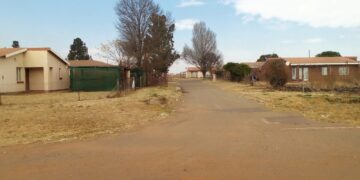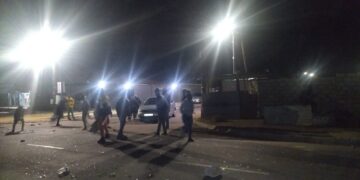DELMAS – A shocking incident at Botleng Secondary School in Delmas has drawn attention to the growing tensions between humans and wildlife in Mpumalanga. On Thursday, February 06, panic erupted when a baboon was seen allegedly attempting to enter a Grade 12B classroom, leading to a violent confrontation with learners that ended in the animal’s gruesome death.
Eyewitnesses report that the baboon was first seen wandering around the school premises before allegedly trying to gain access to the classroom. Chaos ensued as learners, fearing for their safety, alerted others and began chasing the animal across the school grounds. In a desperate attempt to flee, the baboon climbed onto the classroom block but was met with a barrage of stones and sticks thrown by learners. After falling to the ground, the animal was violently attacked and ultimately set on fire, resulting in its death.
The incident has sparked concern among various communities, conservationists, and animal rights organisations. Driven by superstition, some Botleng locals have hinted at witchcraft, based on a belief that the occult can use animals to carry out misdeeds. However, not everyone is convinced, with some questioning how such violence could occur in a school environment and why proper wildlife management protocols were not in place to prevent the situation from escalating.
Samson Ngidi expressed his sadness over the incident, stating, “This is a heartbreaking example of how human-wildlife conflict can escalate out of control when there’s a lack of awareness and preparedness. While we understand the fear that wild animals can provoke, violence is never the answer. Schools and communities need to be equipped with the knowledge and resources to handle wildlife encounters responsibly.”
Naledi Mahlangu, who spoke to the Highveld Chronicle, said, “Witchcraft in daylight walking on all fours, we know there are people using dangerous muthi to advance in life. RIP to the Baboon; someone or some people will be going hungry,” she said without remorse.
Animal rights groups have condemned the incident as a gross violation of animal welfare, calling for urgent educational programs on peaceful coexistence with wildlife.
Baboon and other animal sightings in Delmas and Mpumalanga are increasing due to habitat loss and urban expansion, forcing wildlife into human areas for food. As development continues, human-wildlife encounters will rise, necessitating strategies to manage these interactions.
This incident highlights the urgent need to address the root causes of human-wildlife conflict, emphasising the importance of collaboration between schools, conservationists, community leaders, and local authorities. A critical challenge remains: balancing community safety with the conservation of Mpumalanga’s rich biodiversity. To prevent such tragedies from recurring, education, compassion, and proactive policies are essential.
























